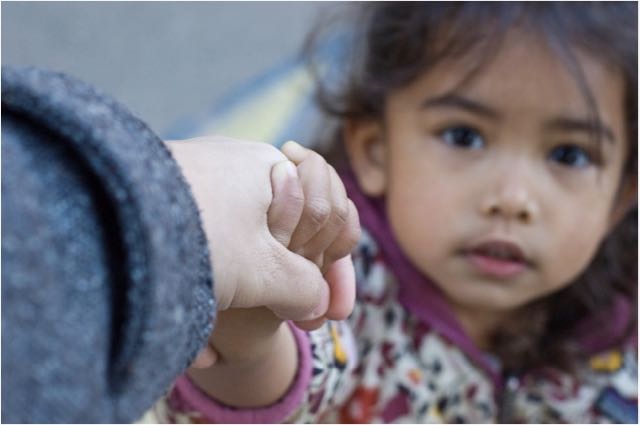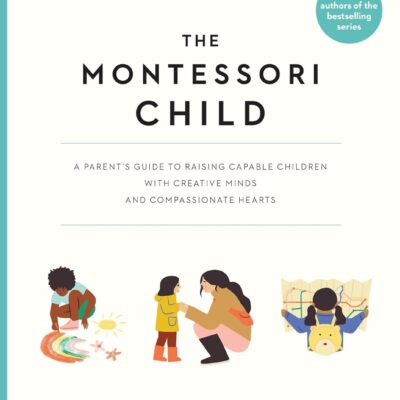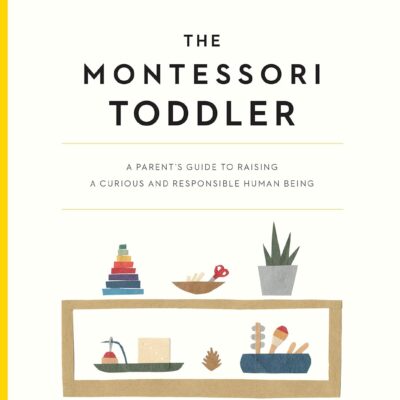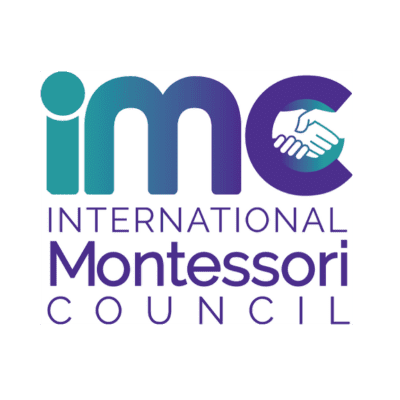In 1907, an Italian physician was invited to open a child-care facility for fifty preschool-aged children in a section of Rome that was avoided and neglected because of its oppressive poverty and crime. The children’s parents worked sixteen or more hours a day. In the absence of adult supervision, these children were vandalizing recently renovated housing. Years later, Dr. Maria Montessori recalled her experience of personal transformation in which she discovered something previously unknown about children:
“What happened will always remain a mystery to me. I have tried since then to understand what took place in those children. Certainly, there was nothing of what is to be found now in any House of Children. There were only rough large tables. I brought them some of the materials that had been used for our work in experimental psychology, the items that we use today as sensorial material and materials for the exercises of practical life.
I merely wanted to study the children’s reactions. I asked the woman in charge not to interfere with them in any way, as otherwise I would not be able to observe them. Someone brought them paper and colored pencils, but, in itself, this was not the explanation of the further events. There was no one who loved them. I, myself, only visited them once a week, and during the day, the children had no communication with their parents.
The children were quiet; they had no interference either from the teacher or from the parents, but their environment contrasted vividly from that which they had been used to; compared to that of their previous life, it seemed fantastically beautiful. The walls were white, there was a green plot of grass outside, though no one had yet thought to plant flowers in it, but most beautiful of all was the fact that they had interesting occupations in which no one, no one at all, interfered.
They were left alone, and little by little, the children began to work with concentration, and the transformation they underwent was noticeable. From timid and wild as they were before, the children became sociable and communicative. They showed a different relationship with each other, of which I have written in my books. Their personalities grew and, strange though it may seem, they showed extraordinary understanding, activity, vivacity, and confidence. They were happy and joyous.
This fact was noticed after a while by the mothers who came to tell us about it. As the children had had no one to teach them or interfere with their actions, they acted spontaneously; their manners were natural.
But the most outstanding thing about these strange children of the St. Lorenz Quarter was their obvious gratitude. I was as much surprised by this as everyone else. When I entered the room, all the children sprang to greet me and cried their welcome. Nobody had taught them any manner of good behavior. And the strangest thing of all was that although nobody had cared for them physically, they flourished in health, as if they had been secretly fed on some nourishing food. And so they had, but in their spirit. These children began to notice things in their homes: a spot of dirt on their mother’s dress, untidiness in the room. They told their mothers not to hang the washing in the windows but to put flowers there instead. Their influence spread into the homes, so that after a while these also became transformed.
Six months after the inauguration of the House of Children, some of the mothers came to me and pleaded that as I had already done so much for their children and they themselves could do nothing about it because they were illiterate, would I not teach their children to read and write? At first I did not want to, being as prejudiced as everyone else that the children were far too young for it. But I gave them the alphabet in the way I have told you. As then it was something new for me also.
I analyzed the words for them and showed that each sound of the words had a symbol by which it could be materialized. It was then that the explosion into writing occurred. The news spread, and the whole world became interested in this phenomenal activity of the writing of these children who were so young and whom nobody had taught. The people realized that they were confronted by a phenomenon that could not be explained. For besides writing, these children worked all the time without being forced by anyone to do so.
This was a great revelation, but it was not the only contribution of the children. It was also they who created the lesson of silence. They seemed to be a new type of children. Their fame spread and, in consequence, all kinds of people visited the House of Children, including state ministers and their wives, with whom the children behaved graciously and beautifully, without anyone urging them. Even the newspapers in Italy and abroad became excited. So the news spread, until finally also the Queen became interested. She came to that Quarter, so ill-famed that it was considered hell’s doors, to see for herself the children about whom she had heard wonders.
What was the wonder due to? No one could state it clearly. But it conquered me forever, because it penetrated my heart as a new light. One day I looked at them with eyes which saw them differently, and I asked myself: ‘Who are you? Are you the same children you were before?’ And I said within myself: ‘Perhaps you are those children of whom it was said that they would come to save humanity. If so, I shall follow you.’ Since then, I am she who tries to grasp their message to follow them. And in order to follow them, I changed my whole life. I was nearly forty. I had in front of me a doctor’s career and a professorship at the University. But I left it all, because I felt compelled to follow them and to find others who could follow them, for I saw that in them lay the secret of the soul.
You must realize that what happened was something so great and so stirring that its importance could never be sufficiently recognized. That it will never be sufficiently studied is certain, for it is the secret of life itself. We cannot fully know its causes. It is not possible that it came because of my method, for at the time my method did not yet exist. This is the clearest proof that it was a revelation that emanated from the children themselves.
My educational method has grown from these, as well as from many other revelations, given by the children. You know, from what I have told you, that all the details included in the method have come from the efforts to follow the child. The new path has been shown us. No one knows exactly how it arose; it just came into being and showed us the new way.
It has nothing to do with any educational method of the past nor with any educational method of the future. It stands alone as the contribution of the child himself. Perhaps it is the first of its kind, which has been built by him, step by step.
It cannot have come from an adult person; the thought, the very principle that the adult should stand aside to make room for the child, could never have come from the adult.
Anyone who wants to follow my method must understand that he should not honor me, but follow the child as his leader.”
—Maria Montessori, January 6, 1942. Excerpted from her talk marking the anniversary of the first House of Children.
Maria Montessori discovered that when young children concentrate and investigate a set of purposefully designed activities, they tend to develop self-control; their movements become ordered, and they appear peaceful. Their demeanor towards others becomes kind and gentle.
These characteristics and other discoveries made with the children of San Lorenzo in 1907 were quickly replicated, as new Montessori schools opened throughout Europe and around the world. Children in Elementary and Secondary Montessori schools displayed tremendous enthusiasm as they explored and studied topics in great detail. Their learning achievements were profound. The overall Montessori experience, however, is deeper than an academic course of study.
Because the Montessori process fully engages children’s natural learning potentials, Montessori students learn about themselves, develop self-confidence, communicate effectively, and work well in groups. Today’s Montessori schools incorporate the discoveries of Maria Montessori as well as recent understandings of how learning and development take place. Montessori schools are now found in private, public, and homeschool settings in the United States and abroad. The educational programs in these schools range from infant care to high school students.
Many of these schools are affiliates of, or are accredited by, one of a dozen national and/or international Montessori organizations. Teachers receive Montessori teacher certification after completing rigorous courses of study. Many teachers describe their own experiences of personal transformation as they, too, witness in children astounding capabilities. From a family’s perspective, becoming part of a Montessori school could be thought of as adopting a natural lifestyle we call The Montessori Way.
Tomorrow’s Child/ November 2017







